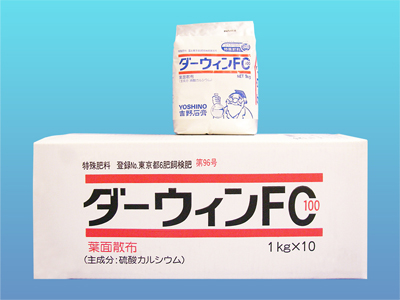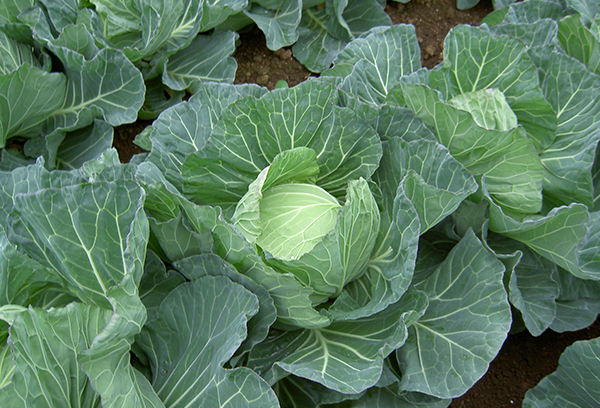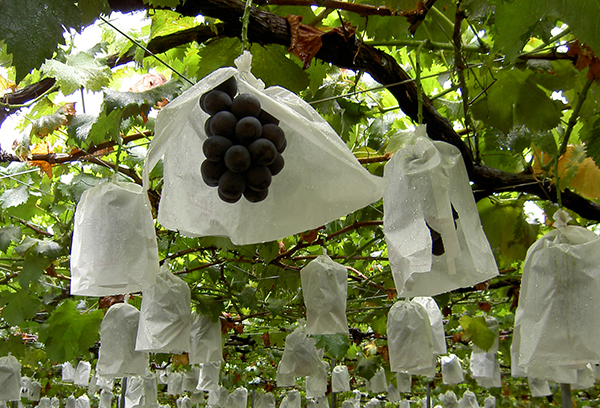Special Report: Darwin FC100
Calcium supplement for many kinds of crops Darwin FC100
Special fertilizer (Calcium fertilizer)
Shape: Particle size of 30 μm or less
Packaging: 10 x 1kg aluminum pack / box

Features
- Calcium based foliar spray agent.
- Calcium sulfate, the main ingredient, dissolves well in water and is efficiently absorbed by crops.
- Through the synergistic effect of calcium and sulfur, soil quality will be recovered, the crop will grow healthily, and it will be effective in improving quality and yield.
- It is also possible to use with an irrigation tube.
- Except for some items, mixing with agricultural chemicals is also possible.
Usage notes
- Please strictly observe dilution ratio of 1:1000. If it is diluted below this value, it may cause white turbidity, dirt on the fruit surface etc, or clogging the irrigation tubing etc.
- There are some agricultural chemicals that can not be mixed, such as phosphate based and copper agent. Please contact the address below for details.
* Contact info Yoshino Gypsum Co., Ltd. Ceramic Sales Division TEL:03-3216-2670 FAX:03-3216-2677 E-mail:seramic@yoshino-gypsum.jp
Effect
- Helping root growth
- Healthy growth with cellular strengthening of crop plants ⇒ Yield increase
- Improved freshness and storability
Especially recommended crops
【Vegetables】
Reducing symptoms caused by calcium deficiency
- Tomatoes and green peppers (reducing bell rot)
- Cabbage and lettuce (reducing core rot, peripheral rot)
- Radishes, turnip (reducing red core symptom)
- Cucumber, potatoes (reducing brown core rot)
- Broccoli (reducing flower bud rot)
 Cabbages
Cabbages 【Fruit trees】
- Nurturing of coloration in many kinds of fruit
- Grapes. Particularly large fruit (raising product quality by decreasing fallen fruit)
- Apple (raising product quality by protecting the surface)
- Pear (reducing fallen fruit and mitosis)
- Cherry (reducing light saltiness of the fruit)
 Grapes
Grapes 【Flowers】
- Chrysanthemum, lilies (preventing leaf frost)
【Paddy rice】
- Nurturing root growth and improving quality of crop (base fertilizer)
- Reducing collapse and improving ripening grade (fertilizer application in the middle of period)
Farmer’s voice
Mr. Ochiai (Murayama, Nagano city, Nagano prefecture): Currently using this product for growing apples and peaches
Mr. Ochiai has experience working as a director of the Nagano Prefecture Fruit Experiment Station, and is currently working by his on-the-field principles as a fruit grower.
"It’s been over 10 years since I began spraying leaves on peach trees with Darwin. It has been confirmed to help to nurture coloring and hypertrophy, improving sugar content and preventing of pulp softening. For apples, it is effective in reducing bitter pits and cork spots that are more likely to develop in some varieties, and improving storability. It is easy to use because there are no constraints for fertilizer registration for both spraying period and number of times. I don’t need to worry about dirt on the fruit skins for any of my produce."

Fujimaki Farm (Murayama, Nagano city, Nagano prefecture): Currently using this product for growing apples and peaches
Fujimaki Farm is a farm specializing in apples, widely known as the grower of “Aika no Kaori” apples (Seedling registration No. 9130, July 27th, 2001).
“It is effective in reducing bitter pits and cork spots that are likely to occur in apples, protecting the surface of the fruit, and improving storability. Among calcium based foliar spraying agents, Darwin is relatively easy to mix with pesticides, so it is easy to use at low cost. "

Mr. Suzuki (Hakushu town, Hokuto city, Yamanashi prefecture): Currently using this product for growing grapes (mainly seedless Kyoho & Pione)
Mr. Suzuki is a cultivator of fruit trees (grapes) and paddy rice, and is a veteran with grape cultivation history of more than 50 years.
"I feel that the vine is solid, the shedding is reduced, and there are improvements in reducing coloring defect due to high temperature and low rain. There is no worry about the influence on bloom."
* In Mr. Suzuki's field, he also use Darwin 1000 in the base fertilization period.

Rules for using Darwin FC100 and content analysis
Application method: Diluted in water with 1:1000 ratio, spray onto leaf and fruit surface
| Crop | Usage period | Expected effect | |
|---|---|---|---|
| Vegetables | Leafy vegetable | Several times in accordance with nursery seedlings, settled plants, start of bulb (lettuce etc.) and after germination control | Prevention of core rot, improvement of sunshine retention |
| Fruit vegetables | Several times in accordance with removal | Prevention of bell rot and stress | |
| Root vegetables | Several times in accordance with removal after earthing up | Improvement of quality by making leaf surface more active, increase yield | |
| Fruit tree | 3~5 times appropriately in accordance with removal | Nurturing coloration and enlargement, increase sugar content, pervention of bitter pit (in apples), preventing fruits from falling off (grapes) | |
| Flowers | 2~3 times appropriately in accordance with removal | Maintain freshness (preventing neck folding, cracks etc) | |
| Lawn | Several times a month | Nurturing root growth, improve leaf color, prevent succulent growth | |
1.If this product sprayed with diluted in water at ratio less than 1:1000, there are possibilities that it cannot dissolve and may contaminate leaf or fruit surface.
2. If used by mixing with phosphoric acid pesticide or liquid fertilizer, it may counteract each others’ effect.
Analysis example
- Calcium(CaO)31%
- Sulfur(S)17.7%
- Silica(SiO2)0.5%
- Held water(H2O)0.5%
- pH6.9
Darwin FC100 spraying example
1.Sampled with apple
(1)Experimental example at public experiment station- Test sample:
- Apple (Fuji)
- Test location:
- Nagano Nanshin Agricultural Experiment Station
- Spraying time:
- Solution with 1:1000 ratio was sprayed 5 times every 20 days immediately after leaves started falling
- Survey result:
-
Area Bitter pit incidence(%) Crack incidence rate(%) Fruit weight
(g)Sugar content
(%)Acidity
(%)Fruit skin color Hardness in 1bs
of sun exposed surface areaSurface color Soil color Darwin 0.0 24.1 345.3 15.9 0.32 3.9 5.5 13.4 Untreated 0.0 82.0 279.6 15.9 0.35 3.1 4.8 13.1 Survey date: November 11th, 2007
- Test location:
- Nagano Prefecture Fruit Experiment Station
- Spraying time:
- Solution with 1:1000 ratio was sprayed 5 times every 20 days immediately after flowers started falling
- Survey result:
-
Area Number of fruits
Fruits / treeBitter pit (%) Fruit weight
(g)Sugar content
(%)Acidity
(%)Fruit skin color Hardness in 1bs of
sun exposed surface areaIncidence rate (%) Incidence degree Surface color Soil color Darwin 140 2.6 1.9 361 15.5 0.32 4.8 6.2 13.0 Traditional 125 3.2 1.8 386 15.2 0.37 4.6 6.2 12.8 Unsprayed 108 4.2 2.9 368 16.0 0.37 5.2 6.5 13.5 Survey date: November 26th, 2003
(2) Concrete examples in other prefectures
- Production area:
- Hirosaki city, Aomori prefecture
- Spraying time:
- 15 days after flowers started falling, solution with 1:1000 ratio was sprayed every 10~14 days
2.Samples using other crops
(1)Grapes
- Production area:
- Hokuto city, Yamanashi prefecture
- Variety:
- Seedless Pione
- Purpose of spraying:
- Flesh enrichment, prevention of shedding
- Purpose of spraying:
- Twice before sacking, once after sacking
Comparison of cultivation of grapes

(Left: Sprayed with Darwin, Right: Untreated) * Some fruits have been removed to make the comparison of vines easier to understand.
(2)Peach
- Production area:
- Minami Alps city, Yamanashi prefecture and Fukushima city, Fukushima prefecture
- Variety:
- All varieties from early ripening to late ripening variety
- Spraying time:
- Flesh and sunlight retention improvement
- Spraying time:
- Twice after desacking
